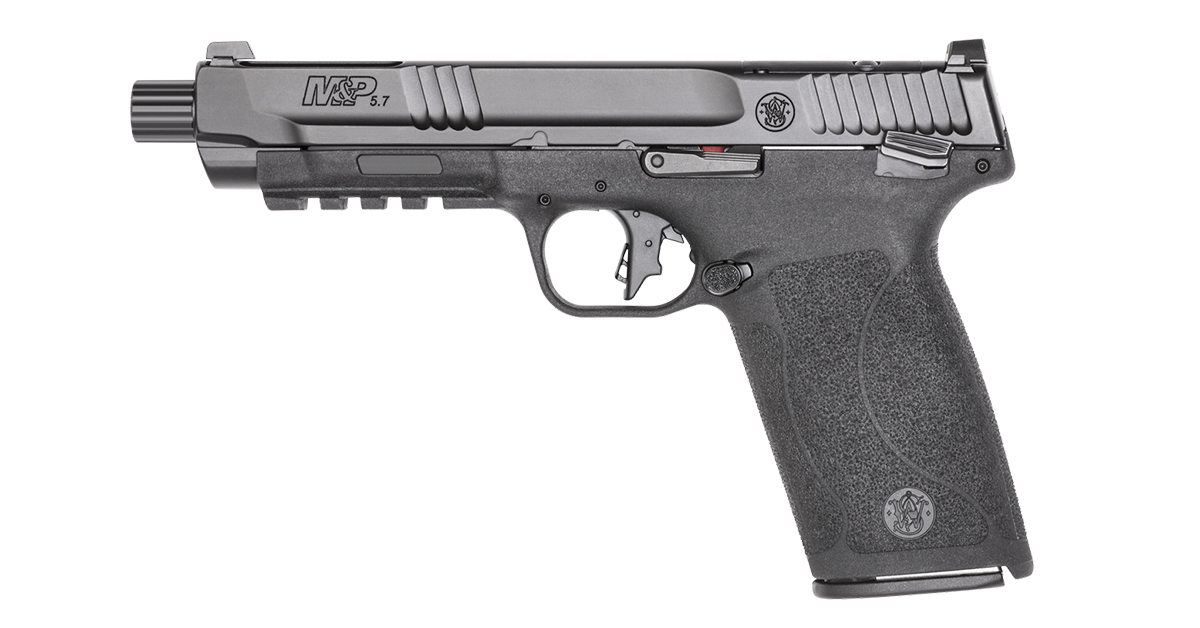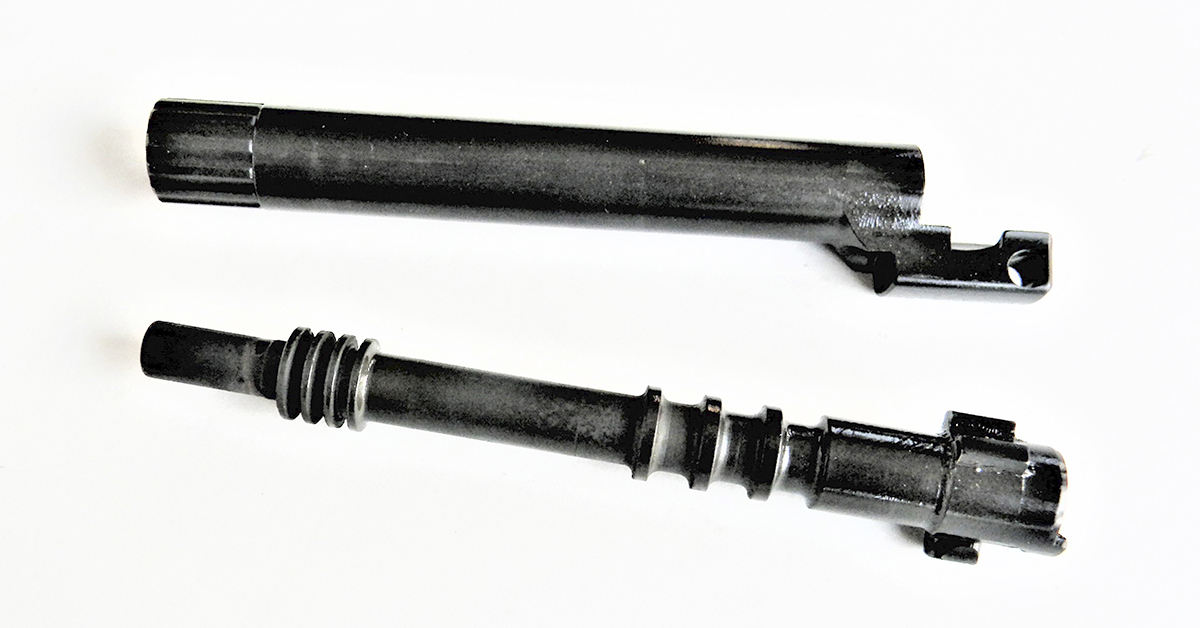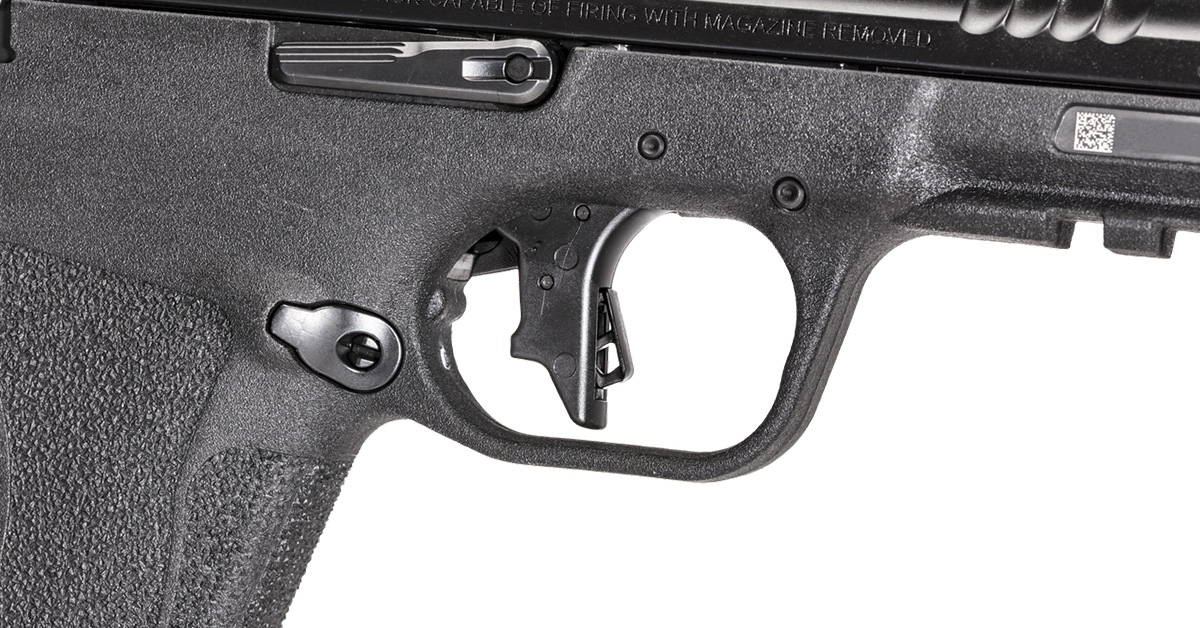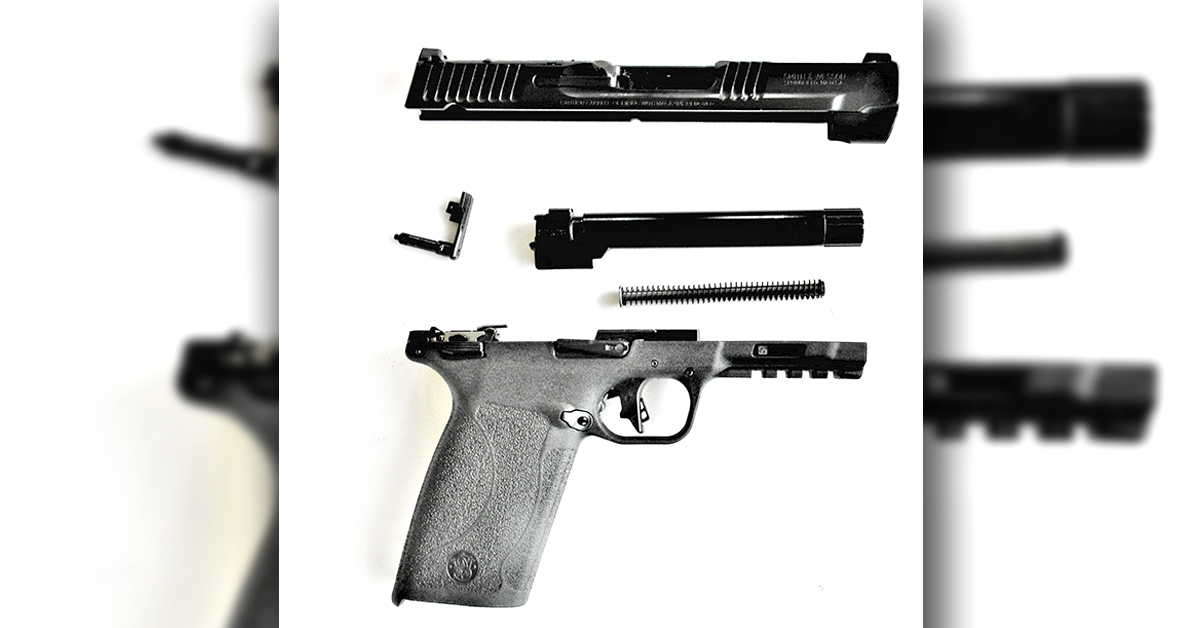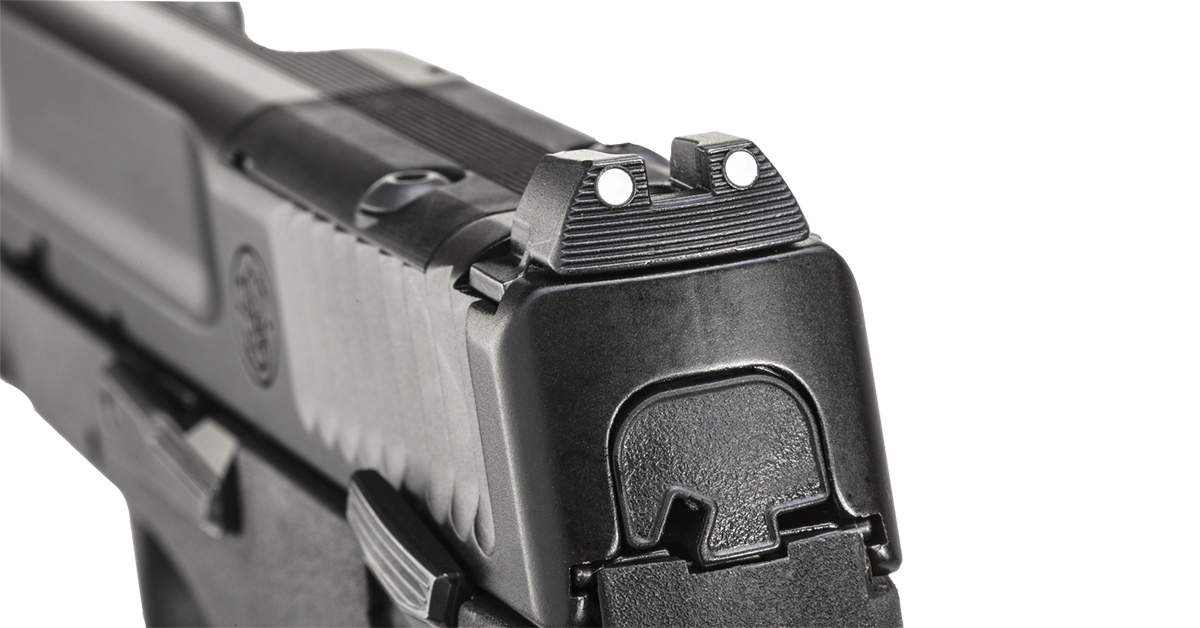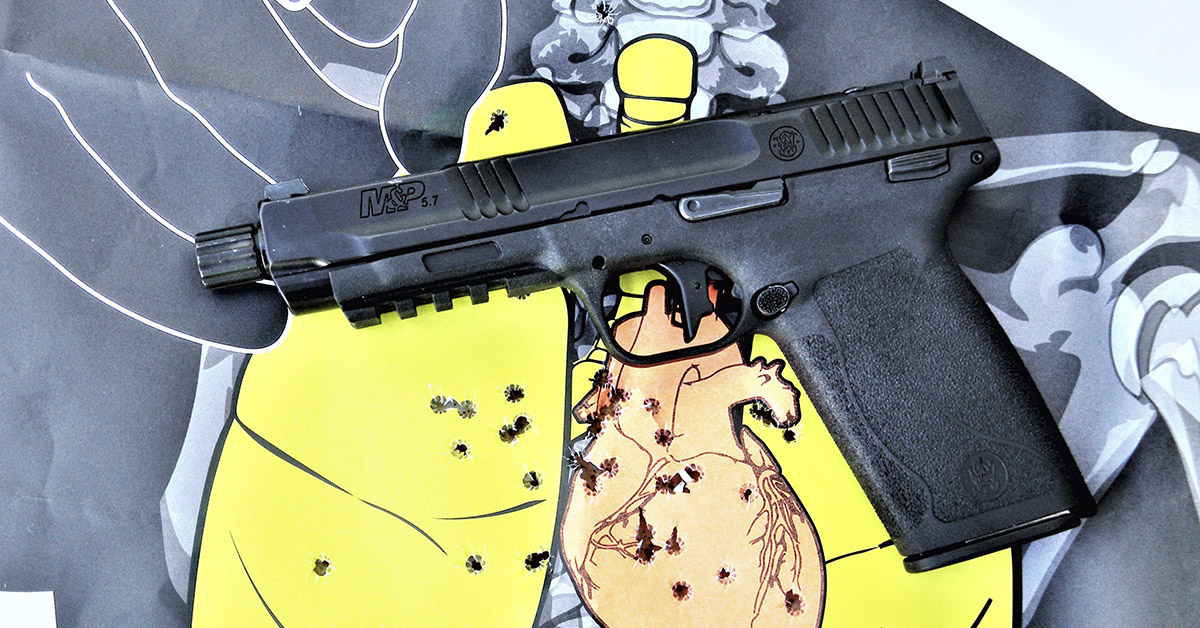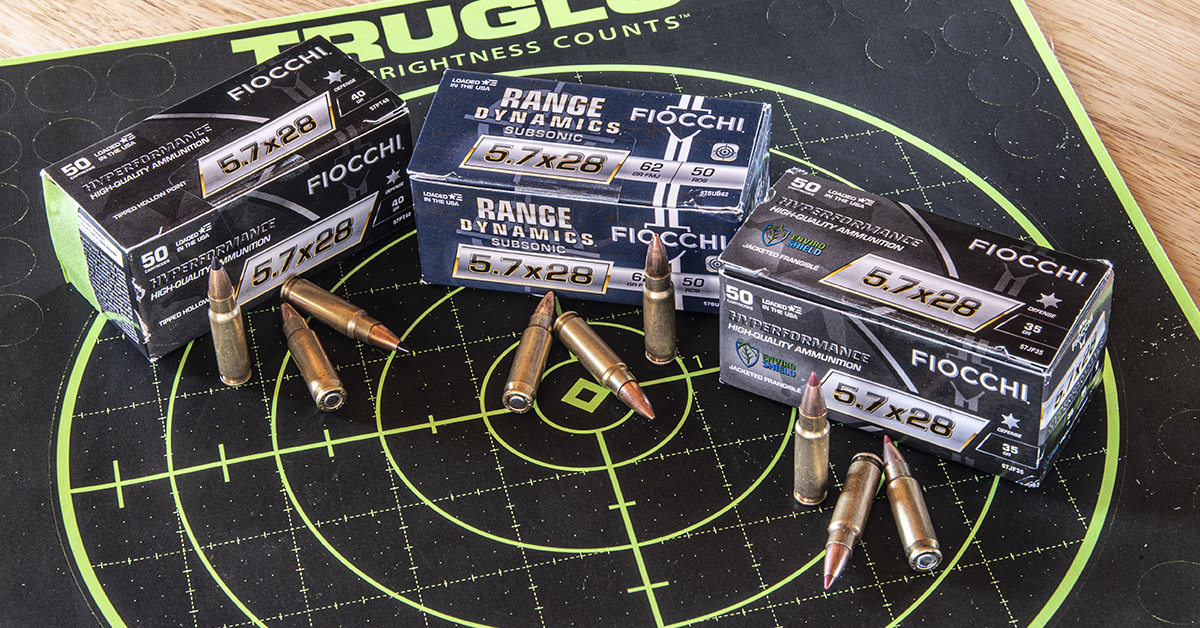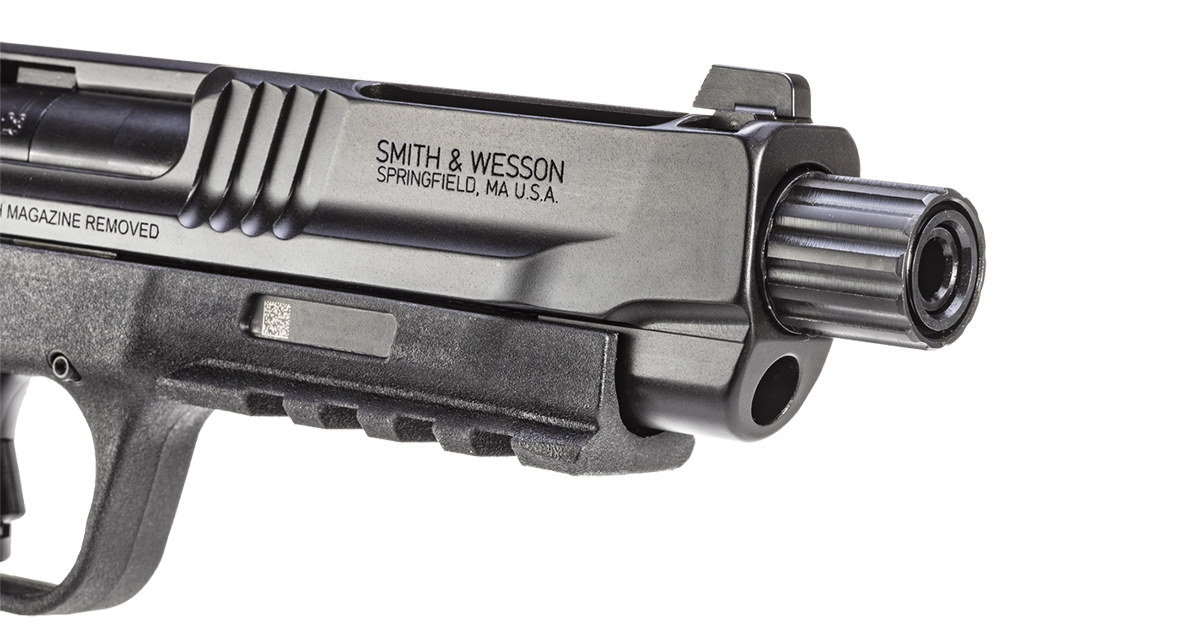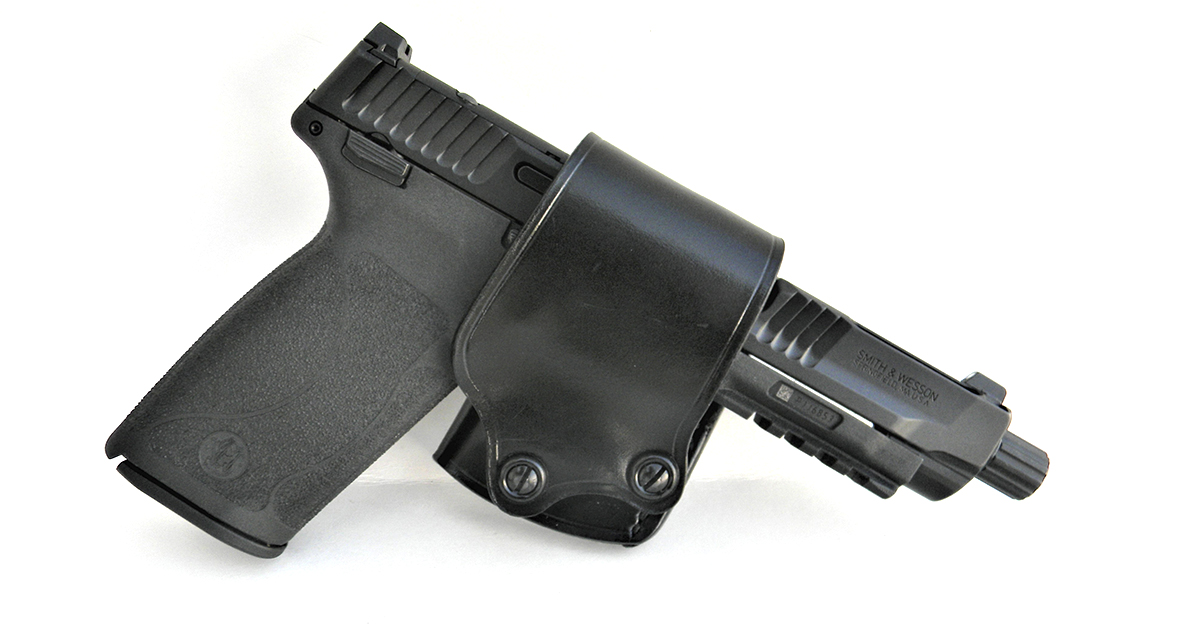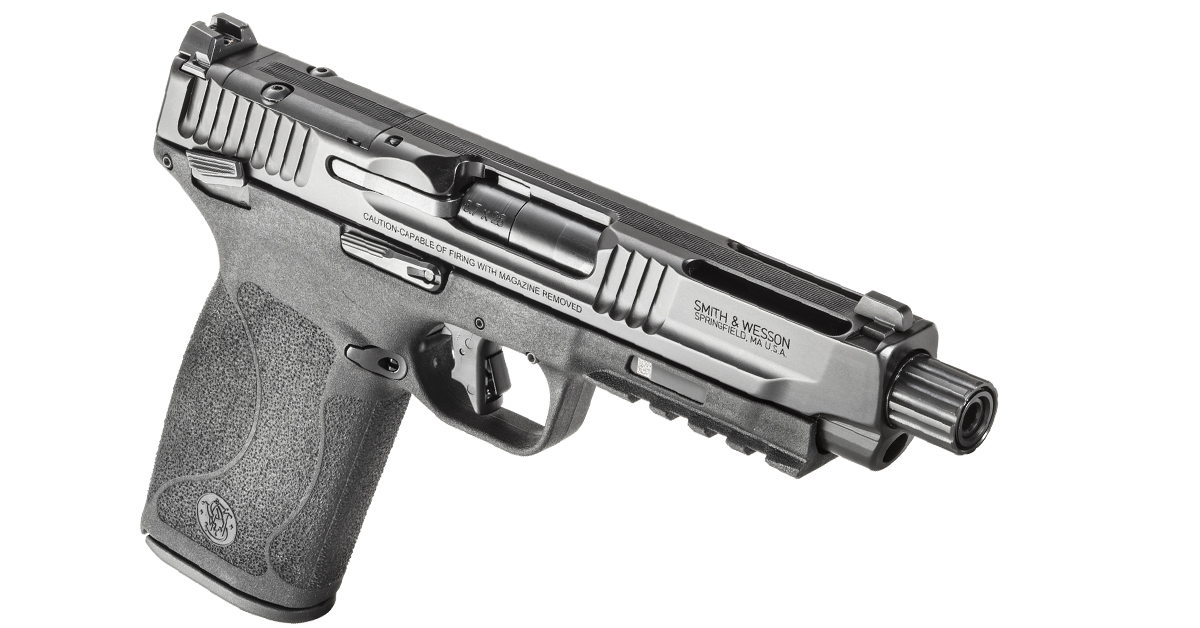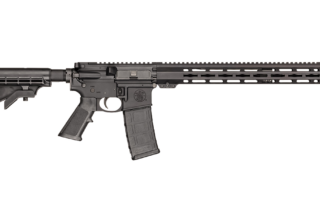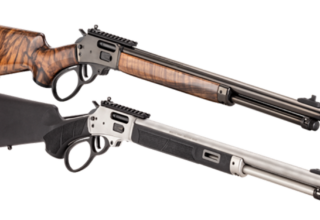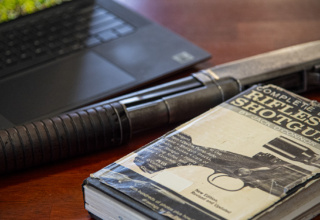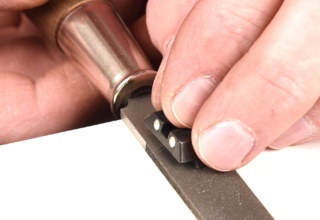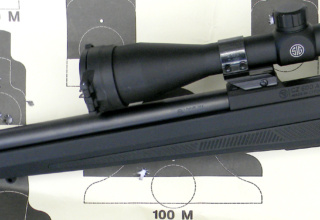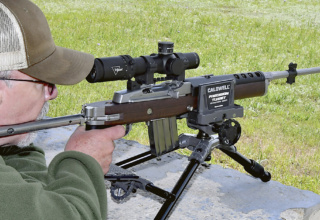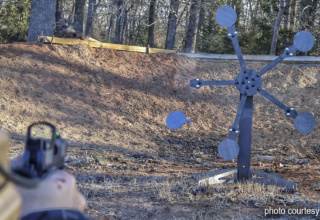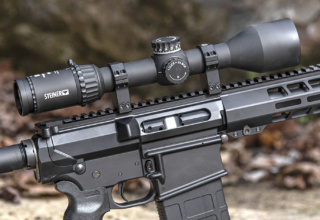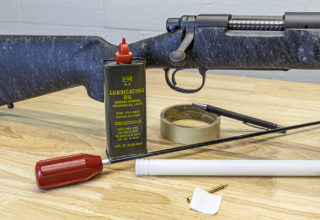The 5.7×28 cartridge is finally gaining traction, and Smith & Wesson steps up to the plate with the all-new polymer M&P 5.7 to manage this spicy load
by Bob Campbell
I am not easily surprised, but Smith & Wesson’s introduction of a 5.7x28mm handgun gave me pause. Smith (affectionate nickname for Smith & Wesson brands) didn’t surrender this niche market to FN or Ruger and introduced an interesting handgun. The pistol will be competitive, to say the least.
I find good quality handguns with innovative design and quality construction interesting. Only a few are fascinating, but this pistol is among them. I have used quite a few Smith & Wesson Military & Police handguns over the years — .30 Super Carry, .380 ACP, 9mm, .40, 10mm and .45 all have merit. This handgun, though, is a doozy. The 5.7x28mm may not be the most practical of calibers but it is a high-velocity, flat shooting number with good performance. The Smith & Wesson M&P 5.7 may be the most useful defense pistol yet introduced in this caliber. The 5.7 doesn’t lend itself to small-frame handguns, and it should not; therefore, this is no small handgun, yet it is light enough. This is a caliber that is at its best when working from a long barrel. After all, velocity is everything in the bottleneck .22 class. But let’s get a good description of the handgun out of the way first.
Early in the introductory letter concerning the M&P 5.7, Smith & Wesson points out that the pistol features a 22-round magazine capacity. Capacity isn’t everything, but then life should be interesting. A handgun with virtually no recoil to speak of and ultra-fast chambering should have a high magazine capacity.
The M&P 5.7 is a polymer frame handgun resembling other Smith & Wesson handguns. It looks somewhat like an elongated M&P 9mm…or perhaps someone put a 10mm M&P in a bun press and both flattened and stretched the piece. We are told the pistol is designed for reliability, accuracy, and consistency. I have no argument with that statement. The true innovation is in the Tempo barrel system. The Tempo is a gas-operated design with a rotating barrel. The system is locked breech. It is interesting that there are very few locked breech rotating barrel handguns in existence. Browning patented an example around 1900. The fertile mind of the great inventor Mondragon of Mexico designed a rotating barrel 1911 type .45. The original Beretta Cougar was perhaps the most successful commercially. My observation had been that while the system is usually strong and sheds recoil easily, the rotating barrel demands more lubrication than other types. The Smith & Wesson Tempo barrel was heavily greased on disassembly, so I would maintain it in this manner.
According to Smith & Wesson, “The M&P 5.7 is an exciting new pistol from Smith & Wesson that incorporates a gas-operated Tempo™ Barrel System to effectively harness the 5.7x28mm round, creating a lighter recoil for an overall better shooting experience.”
The pistol is a hammer-fired, single-action trigger type with a slide cut for optics use. The barrel features a 1/2×28 threaded muzzle. This is in the modern fashion to allow suppressor use. While the zippy 5.7 may be too fast for efficient suppressor use with most loads, with Fiocchi’s 62-grain subsonic, you are able to utilize this option. Fiocchi has done a fine job on this one. You may have need to secure a lighter recoil spring with the 62-grain 975 fps load, but this is the demand if you want a quiet pistol.
The trigger is a flat face of the newest Smith & Wesson design. A blade lever is set in the trigger face. I like the trigger very much. Trigger compression delivers a smooth break at four pounds with a sharp reset. This is a good trigger by any standard.
Disassembly is simple enough. Be certain the pistol is unloaded, lock the slide to the rear, and clear the chamber. Release the slide. Next, carefully bring the slide back about .25 inches and remove the slide lock. The slide assembly now runs forward from the frame. The recoil spring is easily plucked out. The barrel slips to the rear and out — you do not have to remove the thread protector. The barrel is easily twisted and removed from the barrel shroud.
I did not disassemble the pistol until I had fired over 240 cartridges. Fiocchi ammunition burns clean, and there was little powder ash. Even the bore was clean with a couple of copper washes easily removed. For a high velocity number, the 5.7×28 runs clean on all counts.
Despite the innovation of a gas-operated action with a rotating barrel, the Smith & Wesson gets high marks for simplicity. This is a handgun that is easily field stripped and maintained. A single-action trigger is simple enough. I like the big R and small M — big reliability and low maintenance. This pistol may be a dream in that regard. And that brings us to the obvious of where does the 5.7 pistol fit in?
In the not-too-distant past, the FN 5.7 was in the province of the well-heeled shooter who could afford to purchase and feed the handgun. Ergonomics are not good — especially a poorly located safety difficult to manipulate quickly. While well-made, I never found the FN pistol appealing. The Smith & Wesson is affordable, at least as accurate as the FN, and handles well. The pistol is thin for the capacity — 22 rounds on board. The Smith & Wesson is also light enough to be carried daily as it tips the scales at 25 ounces unloaded. With a spare magazine, that is 44 cartridges on tap. You should be able to fight yourself out of a deep hole.
Self-defense is a serious business, so let’s look at the Smith & Wesson on that basis.
First, the M&P 5.7 is light enough for daily carry. It is long but thin enough. Handling is good. The trigger action is crisp and reliable. The frame-mounted safety (a no-manual-safety model is also available) is positive in operation. It doesn’t detract from speed at all to carry the pistol with the safety applied. The pistol is fast in operation and controllable in rapid fire. Accuracy is also good, yet perhaps the pistol isn’t quite as accurate as the Ruger 5.7, or maybe I need more time with the S&W.
That is not to say it isn’t accurate. From a solid bench rest, it isn’t difficult to put five rounds of the Fiocchi 40-grain loading into 2 inches at 25 yards. Standing and firing offhand, accuracy is easy to come by. There is some push, but the pistol offers light recoil. It is easy to fire a double tap or a triple tap much more quickly than with a 9mm or .45.
A big advantage is that the pistol is a fun gun to fire. I fired 200 cartridges in less than an hour. I don’t often do that even with a .22 rimfire! The pistol is an easy shooter but muzzle report tells you that you have fired something with plenty of energy. Speed loads are rapid. There are no downsides to the pistol’s handling at all.
As for ammunition reliability, the Smith & Wesson doesn’t like 62-grain subsonic loads — which may change after a break in or if a suppressor were mounted. You might also need to purchase a spare recoil spring assembly and snip off a few coils. It isn’t unusual for gas-operated handguns to be famously reliable with certain loads and not function at all with others. With the Fiocchi 35-grain frangible load, the pistol never failed to function. Fiocchi 40-grain loads were the majority cartridges shot and they performed reliably. This is a superior defensive handgun by any measure.
The caliber is the real question. Some make comments on the 5.7 without real research and experience. It is far more than a .22 Magnum. The .22 Magnum with 40-grain loads clocks 1250 to 1350 fps in most handguns to a high of 1420 fps with the CCI MaxiMag in the new Walther. That’s great for small game hunting. The .22 Magnum feeds reliably in most pistols but rimfire ignition reliability will never equal a centerfire — just to counter that line of thought. FN’s 5.7x28mm 40-grain V-Max loading is manufactured by Fiocchi. This round breaks 1730 fps average in the S&W 5.7. That’s around 250 ft/lbs of energy. The true test is in ten-percent gelatin. I sometimes use water to compare loads. It certainly tells something about expansion and penetration, and the performance is usually within that of ten-percent gelatin results.
But gelatin enables experimenters to record the wound channel. The 40-grain V-Max loading penetrates 14.5 to 15.0 inches of gelatin. There is a bulge in the wound channel about five inches in, indicating a great deal of energy transfer. The recovered bullet retained almost all its weight with the average recovered weight being 39.5 grains. The average expansion is .455 inches. This seems to offer interesting properties, yet shot placement means the most. The 5.7 hints at good wound potential based on high velocity and bullet performance. As for tumbling, I cannot verify this. The V-Max bullet doesn’t tumble. The FMJ bullet seems to switch between the nose and tail — called procession. As for body armor penetration, commercially available loads are no more effective than the 9mm in that regard.
I find the Smith & Wesson 5.7 pistol a good shooter with much merit for home defense and personal defense applications. With Fiocchi providing a good source for a wide choice of loads, we have a great combination for serious use.
What We Like
- The pistol is accurate and reliable with 35- to 40-grain loads. It is light on recoil and quick to address multiple targets.
What We Don’t Like
There is little not to like. Maybe I would have preferred a lever take-down, as with other M&P pistols.
What We Would Change
- I will probably add a set of night sights.
Compare To
- The Smith & Wesson is a much better buy than the FN — more ergonomic, faster handling, and at least as accurate. It compares favorably to the Ruger. I like the Smith better than the Ruger, but it isn’t by a huge margin. The S&W and Ruger are great guns going head-to-head in this niche.
Smith & Wesson M&P 5.7 Specifications
- Chamber: 5.7X28
- Size: full
- Capacity: 22
- Frame: polymer
- Action: Internal hammer-fired
- Barrel Length: 5 in.
- Barrel Material: stainless steel
- Color/Finish: Black
- Threaded Barrel: yes
- Safety: thumb safety
- Sights: white dot
- Optic-Ready: yes
- Width: 1.1 in.
- Length: 8.5 in.
- Height: 5.25 in.
- Weight: 26.7 oz.
- Magazines: 2

